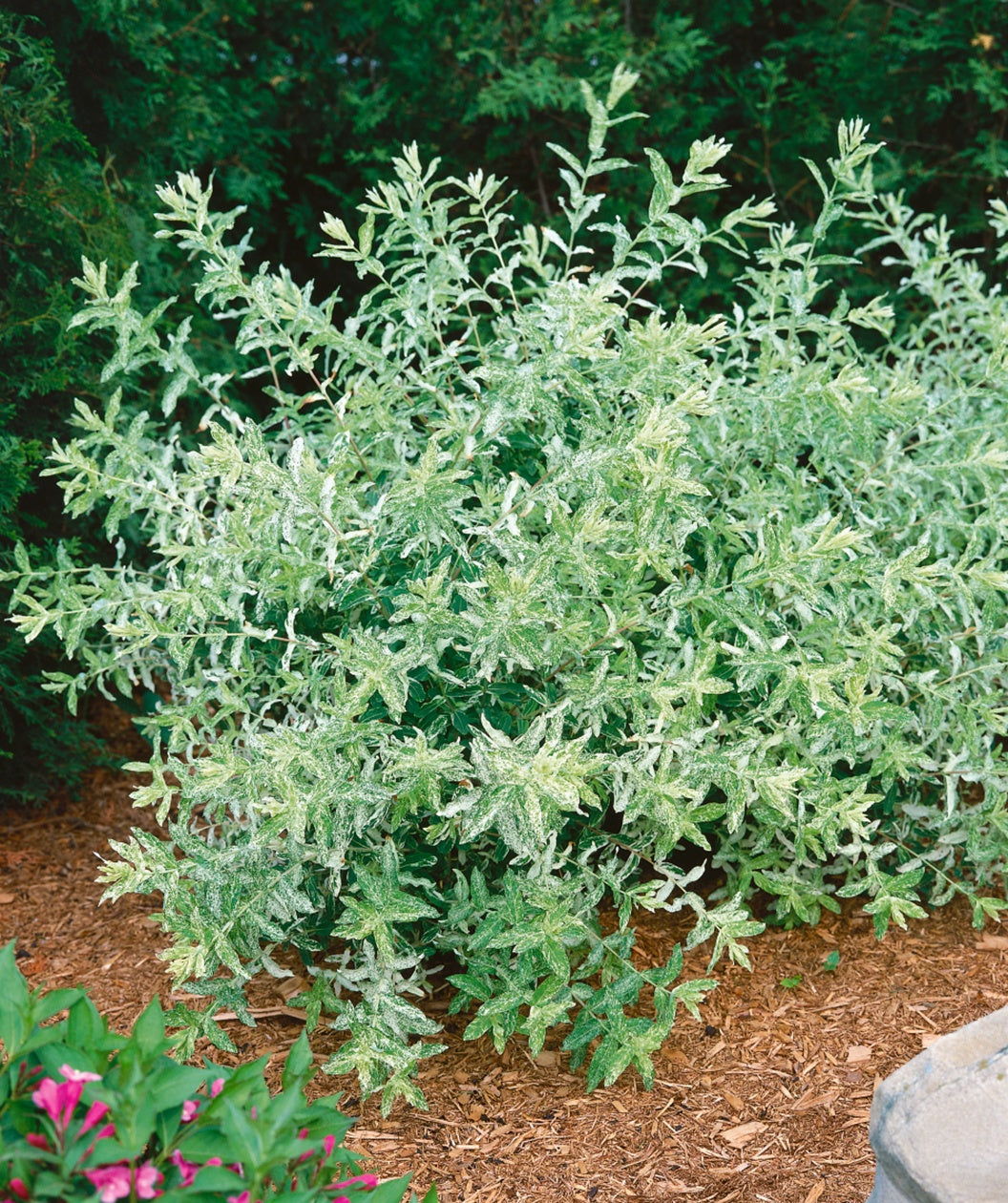

WHIMSICAL MULTI COLORED FOLIAGE ALL SEASON LONG
FEATURES:
- In spring, vibrant variegated leaves emerge from the buds in colors of cream, green, and pink
- As plant matures, those pink hues will shortly disappear
- In summer, leaves stay a pretty shade of light green that add motion and a lovely sound as the breeze intertwines with them
- Stems are a coral red color that adds wonderful winter interest
- Works well planted in the ground and in containers
- Hand Selected, Fresh from the Grower
- Ships in a plant-safe designed box
Growth Facts
- Hardiness Zone: 3-7
- Mature Height: 4-6' tall
- Mature Width: 4-6' wide
- Exposure: Full Sun/Part Shade
- Spacing: 5-7' apart
WHIMSICAL MULTI COLORED FOLIAGE ALL SEASON LONG
FEATURES:
- In spring, vibrant variegated leaves emerge from the buds in colors of cream, green, and pink
- As plant matures, those pink hues will shortly disappear
- In summer, leaves stay a pretty shade of light green that add motion and a lovely sound as the breeze intertwines with them
- Stems are a coral red color that adds wonderful winter interest
- Works well planted in the ground and in containers
- Hand Selected, Fresh from the Grower
- Ships in a plant-safe designed box
Growth Facts
- Hardiness Zone: 3-7
- Mature Height: 4-6' tall
- Mature Width: 4-6' wide
- Exposure: Full Sun/Part Shade
- Spacing: 5-7' apart
Why plant Dappled Willow?
Dappled Willow will bring a joyful pop of color to your landscape with its cheerful pink, white, and green variegated foliage. This fast-growing Accent will quickly fill out to become the star of your entryway garden, patio area, or poolside plantings. If you favor clean lines and manicured landscapes, you can easily shear its foliage into a tight globe shape, and if you prefer a more informal look, you can let it take a more free-flowing, natural rounded form. The choice is yours with this handsome, colorful, and adaptable Accent!
You probably wouldn’t look twice if you saw this plant clothed in its usual green color in the wilds of Korea and Japan. This selection, however, is a jaw-dropper. Simply calling its pink/white/green foliage variegated would be an injustice, so the Japanese named it Hakuro-, meaning “white dew,” Nishiki, meaning “a beautiful combination of colors”—in reference to intricate Japanese tapestries made in days past. The Japanese had been growing this beaut for some time when Dutch plantsman Harry Van Der Laar brought it to the West’s attention in 1979.
How to use Dappled Willow in the landscape?
Grow Dappled Willow next to plants with red or purple foliage or evergreens with deep green leaves to create more drama. The contrast will make its bright, lively variegation stand out even more.
Planting Zones
Hardiness Zone: 3-7
How To Plant Dappled Willow
Dappled Willow, also known as Hakuro Nishiki Willow, is a fast grower and has the best foliage color that we have ever seen on a willow! The Japanese name refers to the coloring of the leaves; the leaves emerge as a mixture of white, pink, and green. The Dappled Willow will provide it’s best foliage color if planted in full sun, if planted in a shaded area – the leaves will fade to all green. They prefer to be planted in soil that is moist, but not wet. Dappled Willows also have no major insect problems.
How To Water
These babies should be watered twice a week. When they are young you'll want to water them very deeply and as it ages you can water less frequently, giving it an inch of water a week.
How To Fertilize
Dappled Willows are not ones to really need fertilizer, but if you do wish to give your plant a little boost in the springtime or after planting. We recommend using our Elements Starter Plant Food for that magical growth boost!
How To Prune
Your willow will always have its best foliage color when you prune it regularly. Early each spring, before your willow starts to grow, prune out the some of the oldest stems down at ground level and also shear the newest growth from the previous year back by 50%. This will ensure a strong flush of colorful new growth each year. Then, in late spring shear it again, removing 50% of the newest growth to get a strong and colorful flush of summer growth.




